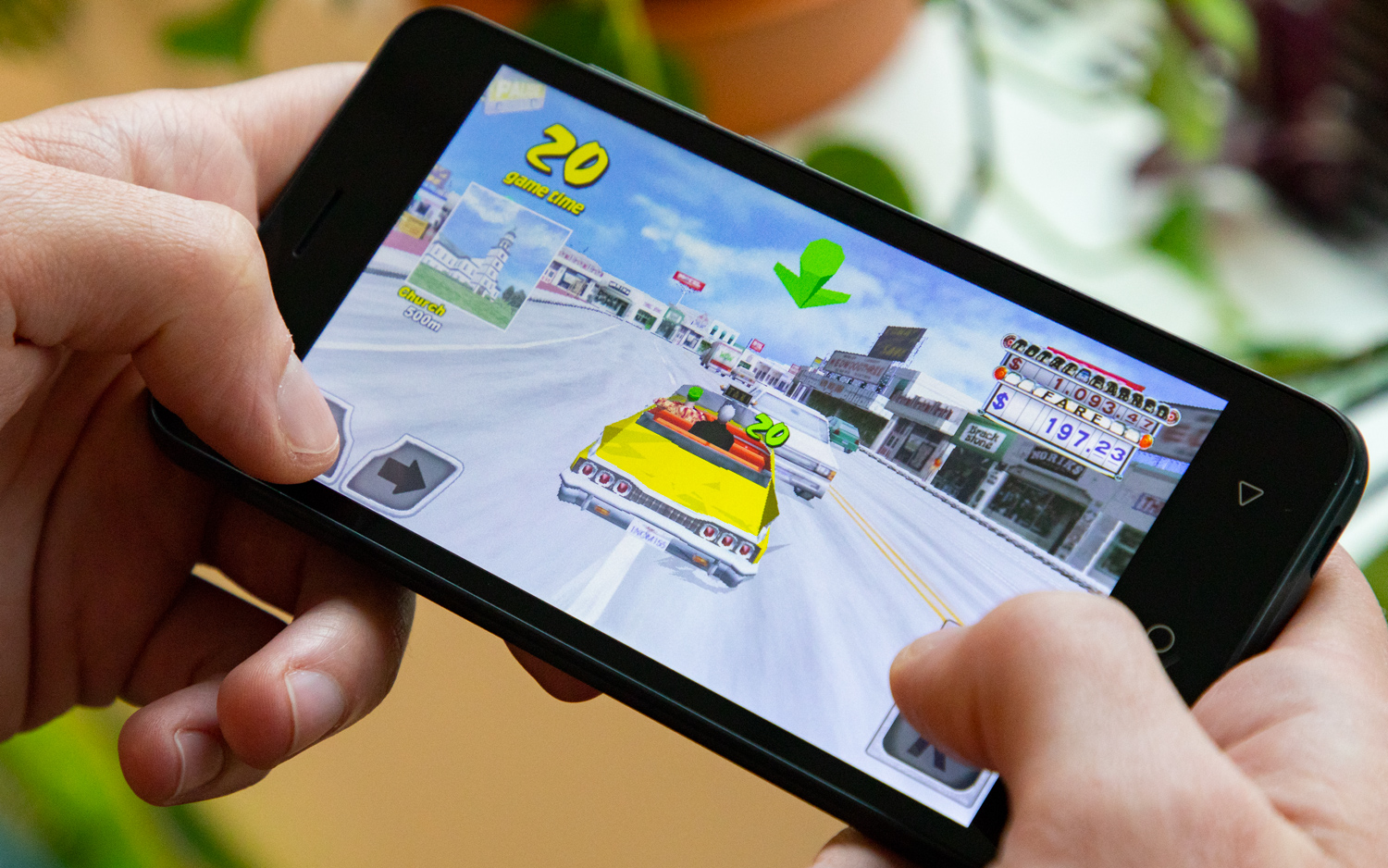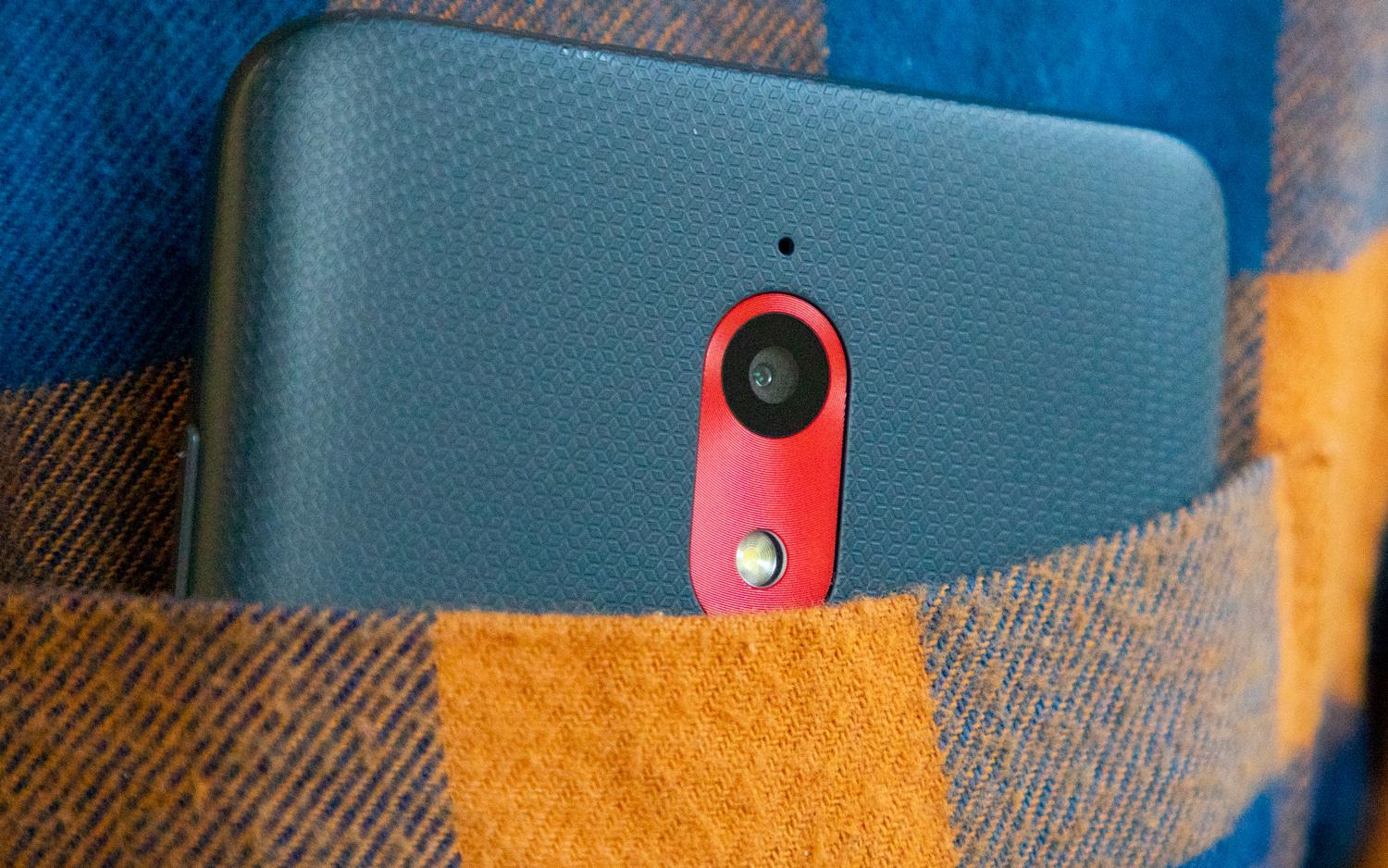Tom's Guide Verdict
Coolpad's Illumina is one of the cheapest phones money can buy, and we wouldn't wish it on our worst enemy.
Pros
- +
It's cheap
- +
Android Go software is nice
Cons
- -
Terrible display
- -
No fingerprint sensor
- -
Anemic performance
- -
Short battery life
- -
Awful camera
Why you can trust Tom's Guide
At $39 for Boost Mobile customers, Coolpad's Illumina is one of the cheapest smartphones you can buy today.
Unsurprisingly, that also makes the Illumina one of the most basic smartphones on the market. The Illumina is the latest of a growing number of devices with Android Go, a stripped-down flavor of Google's mobile OS optimized for handsets with limited specifications.
Even with Android Go to lighten the load, the Illumina, like many other handsets in the two-digit price range, isn't particularly fast or pretty or long-lasting on a charge. That makes it very hard to recommend, even if you don't have much to spend on a phone.
Design
Entry-level smartphones are deservedly synonymous with chintzy plastics and gaudy exterior touches, usually cobbled together in a fruitless attempt to imitate the metal and glass of much more expensive devices.
The Coolpad Illumina, with its brittle-feeling, textured, matte-gray plastic back; chunky bezels; and capacitive navigation keys, doesn't add anything design-wise to the cheap phone conversation. But it doesn't try to deceive you either; you won't find any faux chrome accents here.

The only dash of personality to be found is the red camera stack, which manages to catch your eye without venturing into obnoxious territory. The Illumina isn't stunning by any means, but it is simple, clean and unassuming, with exactly the right amount of pizazz.
MORE: Best Cheap Unlocked Smartphones
Get instant access to breaking news, the hottest reviews, great deals and helpful tips.
While you won't find a fingerprint sensor on the Illumina, there is, thankfully, still a headphone jack. The user-replaceable battery can be accessed behind the removable plastic back plate.
Display
The Illumina's 570 x 320 LCD display takes you back to the earliest days of smartphones, though the low resolution is actually the least of this screen's problems.

The visibility at off-center angles might be the worst I've ever encountered in a phone. Side-to-side viewing isn't so bad, but when you tilt the Illumina up or down ever so slightly, on-screen content becomes almost unviewable.
This is an appallingly bad LCD panel, the likes of which you thankfully don't see much of anymore. Trying to watch the trailer for Avengers: Endgame was a headache-inducing experience, with the washed-out hues, nonexistent dynamic range and hyper-reflective cover glass. Eye strain is practically unavoidable under harsh indoor lighting or outside on a sunny day.
This is an appallingly bad LCD panel, the likes of which you don't see anymore.
That's not helped by the display's peak brightness of 258 nits, far lower than the Alcatel 7's 443 nits. The inaccurately named Illumina can't even cover the full sRGB color space, topping out at 92 percent. At least the phone's 0.32 Delta-E rating indicates relatively accurate hues. (Numbers closer to zero are better.)
Performance
The Snapdragon 210 processor and 1GB RAM inside the Illumina are thoroughly underwhelming. Forget light gaming — this phone can barely handle the Android home screen.

Forget light gaming — this phone can barely handle the Android home screen.
Animations around the OS feel as though they take place at half speed. This contributes to a general lack of responsiveness; there's always a small delay between when you interact with the touch screen and when the intended action transpires. It happens with everything from pulling down the notification shade to opening apps and scrolling through webpages.

While it's true that we're talking about a $40 phone here, this kind of general, inescapable lag just isn't something anyone should have to live with. Devices like the $199 Moto G6 strike an acceptable balance among performance, efficiency and a relatively low price. The G6's score in Geekbench 4, a benchmark of overall system performance, was 3,934. For reference, the Illumina could muster no more than 845 points. Yikes.
Software
The Illumina runs Android Go, which is specially designed by Google to run better on entry-level hardware, especially on phones that have 1GB of RAM.

While Android Go evidently hasn't helped the Illumina's performance, the OS does offer a rather slick experience that ensures access to the apps you need, without any unnecessary fluff standing in your way.
The Illumina comes with Go versions of Google's most popular apps pre-installed. These apps are at least half the size of their typical Android counterparts, so they don't consume too much storage. That's a huge benefit on a phone that has just 8GB of onboard capacity to work with; but as a consequence, these apps sacrifice some features to fit on the hardware.

Maps Go, for example, tips the scales at 73 kilobytes, while the regular Maps app is 48 megabytes. As a consequence of that, Maps Go lacks Navigation, a mainstay of Google Maps going back nearly to the beginning of Android. If you want turn-by-turn directions, you have to download a separate app, called Navigation for Google Maps Go.
MORE: Android Tips to Unlock Your Phone's Full Potential
Android Go also moves Assistant into a separate app, so you can't access it by long-pressing the home button, which you can do on conventional Android phones. Aside from that missing shortcut, though, this is your typical stock Android experience, running the relatively up-to-date 8.1 Oreo. Given the modest hardware, we wouldn't expect an update to Android Pie — you've been warned.
Camera
There's very little to say about the Illumina's 5-megapixel rear camera and 2-megapixel front camera. Even in the best of lighting, the photos they produce are washed out, low-res and fuzzy. That's hardly surprising for such a cheap phone, but the Illumina's price doesn't make the results any more acceptable.

Consider this example, taken under the plentiful light of our film studio. Even the sharpest aspects of the frame seem as though they lack focus. Everything's grainy and noisy, the colors of the flowers and globe aren't conveyed appropriately, and the hues bleed out of their boundaries and blend together. The whole thing is an irredeemable mess.

And that's what the Illumina can do in the most favorable of conditions. The backlighting of this attempt, taken at a windowsill inside our office, destroyed any hope of a satisfying still-life shot. Even with HDR mode enabled, the sky is still blown out and the shadows lack all detail. It certainly doesn't help that HDR photos take forever to process, too.

That paltry 2-MP selfie lens doesn't impress either, but to its credit, it's not much worse than the results from the main sensor. Again, we're faced with an overwhelmingly blurry shot, strange white balancing of the fluorescent fixtures in the background and a complete inability to capture fine detail, like the texture of my shirt or my beard.
Battery
The Illumina's measly 2,150-mAh battery may have been sufficient five years ago, but like the rest of the phone, it's hopelessly outdated and woefully unequipped for modern use.

The Snapdragon 210 should be relatively efficient given its limited power, and you wouldn't expect the device's sub-720p panel to draw much energy, especially with the screen's limited brightness. And yet, Coolpad's budget handset could muster only 5 hours and 15 minutes in our battery test, in which we forced the phone to run through web pages on Boost's LTE network until it ran out of juice.
Like many cheap handsets, the Illumina still clings to micro USB for charging, rather than the newer USB Type-C standard. Because of that, this phone doesn't charge exceptionally fast, despite its limited capacity.
Coolpad Illumina Specs and Price
| Price | $39 on promo ($79 normally) |
| OS | Android 8.1 Oreo (Go edition) |
| Screen Size (Resolution) | 5-inch LCD (570 x 320) |
| CPU | Qualcomm Snapdragon 210 |
| RAM | 1GB |
| Storage | 8GB |
| microSD Slot | Yes, up to 32GB |
| Rear Camera | 5 MP |
| Front Camera | 2 MP |
| Battery Size | 2,150 mAh |
| Battery Life (Hrs:Mins) | 5:15 |
| Water Resistance | No |
| Size | 5.8 x 2.9 x 0.4 inches |
Bottom Line
Yes, the Coolpad Illumina is very attractively priced, and especially cost-conscious consumers may give it some consideration. That makes it all the more troubling that this phone is absolutely miserable to use and borderline impossible to live with.
While Boost doesn't offer anything quite as cheap as the Illumina that earns our recommendation, you'll certainly have a better experience if you spend a little extra and spring for the Moto E4 instead, which that carrier is currently offering for $69. And past the $100 threshold, countless devices offer usable processors, bigger batteries and displays that won't give you a headache. You may not save quite as much, but trust us — no discount is worth this much suffering.
Credit: Tom's Guide
Adam Ismail is a staff writer at Jalopnik and previously worked on Tom's Guide covering smartphones, car tech and gaming. His love for all things mobile began with the original Motorola Droid; since then he’s owned a variety of Android and iOS-powered handsets, refusing to stay loyal to one platform. His work has also appeared on Digital Trends and GTPlanet. When he’s not fiddling with the latest devices, he’s at an indie pop show, recording a podcast or playing Sega Dreamcast.

